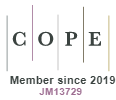The Importance of Invisible Local Industrial and Social Aspects on The Modern Architectural Project: Evaluating An Example of A Community Centre of The 1950s In Japan
DOI:
https://doi.org/10.15415/cs.2018.52003Keywords:
Community Centre, Interior Development Projects-Post-war Period, Local Industries, Industrial HeritageAbstract
The purpose of this paper is to evaluate an example of modern architecture in Shiogama Japan. The evaluation is made in terms of the effect of local industry and local community movements in relation to the transformation of Japanese society in the post-war period. As the ultimate purpose of the Modern Movement in Architecture is to benefit the common people, the current paper is focussed on the Community Centres that were built after Japan’s defeat in the Second World War. At that time, the Japanese society changed rapidly from a military regime to a democratic one. The Community Centre that is dealt with, in this paper was built in the early 1950s, so one can expect to find some aspects of building a democratic society behind the actual building project. Further the invisible and the intangible value of this Community Centre has been discussed in the period when the Japanese government promoted interior resources development projects. The purpose of this research is to understand some hidden historical values of the Community Centre, which represent not only the social phenomenon of that period, the architectural expression and technical aspects of the building but, also, the local industrial heritage. The paper also describes the importance of sustaining support for the local peoples’ activities by conserving this Community Centre and, then, explains how the Municipality of Shiogama decided to renovate this historical piece of modern architecture. Now, the former Community Centre has been re-born as a Community Centre and a Museum of Art for a local painter.
Downloads
References
National Institute for Educational Policy Research of Japan. (2006) TheBasic Documents on the Community Centre [Kominkan Ni Kansuru Kiso Shiryo, in Japanese]. In The Vice Minister of Education Japan in 1946. The Ultimatum No.122. Tokyo, Japan: Author
NPO-Minatoshiogama. (2004). A History of Port Shiogama City [Shiogama Minato Mukashibanashi, in Japanese]. Shiogama, Japan: Author
The Board of Education of Municipality of Shiogama. (1975). The History of Shiogama [Shiogama No Rekishi, in Japanese]. Shiogama, Japan: Author
The Board of Education of Municipality of Shiogama. (2012). Handbook of the Education Centre of Shiogama 2012 [Shiogamashi Shogai Gakusyu Centre Youran (2012), in Japanese]. Shiogama, Japan: Author
The Community Centre of Shiogama (1958). In The Handbook of the Community Centre of Shiogama [Shiogamashi Kominakn Yoran, in Japanese]. Shiogama, Japan: Author
The Community Magazine of Shiogama. (2012). Fureaiesupu Shiogama_Kominkandayori, No.160 [Fureai Esupu Shiogama_Kominkan Dayori No.160 in Japanese]. Shiogama, Japan: Author
The Compilation Committee of Shiogama’s History (1986). The History of Shiogama City II [Shiogamashishi II Honapen II, in Japanese]. Shiogama, Japan: Author
The History of Port City Shiogama and Shiogama Shrine [Shiogama Jinjjya To Minatomachi Shiogama No Rekishi, in Japanese]. (2003). In the Second Report of the Shiogama Study. Shiogama, Japan
TheMunicipality of Shiogama. (n.d). An Architectural Feature of the Shiogama Community Centre [Shiogamashi Kominkan Bunkan No Kenchiku NoTokucho Ni Tsuite, in Japanese]. In An administrative document of Shiogama, Shiogama, Japan: Author
The Nara Document on Authenticity (1994). Nara Conference on Authenticity in Relation to the World Heritage Convention, Nara, Japan. Retrieved from http://www.japan-icomos.org/charters/nara.pdf
The Union of Plywood Industry of Japan. (2008). The Report of Durability on the Plywood Building [Shuseizai Kenchikubutu No Taikyu Chosa Houkokusho,in Japanese], Tokyo, Japan: Author
The Union of Plywood Industry of Japan. (2012). The Handbook of the Plywood Architecture [Shuseizai Kenchikubutsu Settkei No Tebiki, in Japanese], Tokyo, Taisei-Syuttpansha. Tokyo, Japan: Author
The Union of Plywood Industry of Japan. (n.d.). The History of Important Plywood Buildings [Kichona Rekishiteki Syuseizai Kenchikubutsu, in Japanese]. In a Pamphlet of the Union of Plywood Industry of Japan. Tokyo, Japan: Author
Yotusi, Ryouichi. (1976). A research on the locations of Plywood Mills in Japan [Honpou No Shyuseizai-Kougyo No Bunnpu Ni Kansuru Kento, in Japanese], In The Science Journal of the Tohoku Gakuin University, No.7.
Seiichiro Watanabe, Former Director of the Community Centre interview in November 2012 by the author.
Downloads
Published
Issue
Section
License
Articles in the Journal of Creative Space (Creat. Sp.) by Chitkara University Publications are Open Access articles that are published with licensed under a Creative Commons Attribution- CC-BY 4.0 International License. Based on a work at https://cs.chitkara.edu.in. This license permits one to use, remix, tweak and reproduction in any medium, even commercially provided one give credit for the original creation.
View Legal Code of the above-mentioned license, https://creativecommons.org/licenses/by/4.0/legalcode
View Licence Deed here https://creativecommons.org/licenses/by/4.0/
 |
Journal of Creative Space by Chitkara University Publications is licensed under a Creative Commons Attribution 4.0 International License. Based on a work at https://cs.chitkara.edu.in/ |







